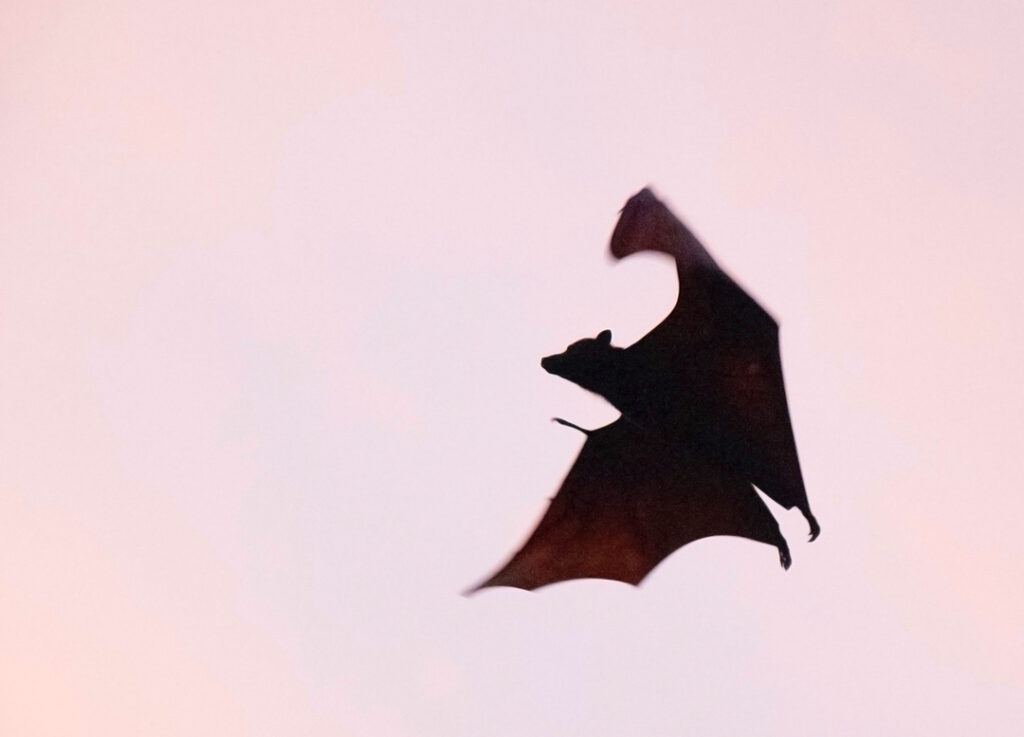Dracula’s journey from the exotic other to secular Protestantism
Dracula’s journey from the exotic other to secular Protestantism
BBC’s Dracula series was released in 2020. This guest article analyses Dracula’s ‘religion’ and his fear of the cross symbol.
This guest article was written by Jonathan Rud Wu Pedersen, a student at the University of Copenhagen.
BBC’s new Dracula series was released in 2020 to an audience bearing high expectations. The directors, Mark Gatiss and Steven Moffat, famous co-writers of series such as the modern Sherlock Holmes or Doctor Who, are also known as astute horror fans.
Dracula was released as a three-part series over three days starting on New Year’s Eve of 2020. The series thereby not only highlighted the central role Dracula plays in the British horror genre; it was also a nod to the almost annual BBC short films broadcast at Christmas, or perhaps rather the Christmas ghost stories by M.R. James and Charles Dickens. As such, Mark Gatiss and Steven Moffat are quite self-aware of their production, referencing Hammer Horror pictures from a bygone age of cinema.
Although many liberties were taken and many things changed in the 2020 adaptation, for better or worse (a normative question irrelevant to this blog post), Dracula 2020 still carries with it a somewhat oriental treatment of the East, just like the book and tradition that it was inspired by.[1]
For this blog post, a further endeavour into the original Dracula novel by Bram Stoker shall be mostly avoided, as much literature on this topic has been written already.[2] [3] In that regard, this short article will mostly concern the BBC production from 2020.
The exotic ‘Other’
In the 2020 Dracula miniseries, Dracula is still found residing in his familiar backwater, somewhere far away in Eastern Europe. Dracula appears as an old, drained figure, who needs other lives to sustain himself. Dracula wants to travel to the modern world and does so by absorbing another man’s youth (Jonathan Harker), his language, his manners, and his knowledge. In the opening of the series, Dracula is a prime example of the exotic Other that Teemu Taira describes in his studies. An oriental, exotic ‘Other’, different from the secularised ‘us’.[4]
Dracula’s English is strange, his personality uncanny, and his code of morals almost frightening. At the same time, Dracula also bears with him a skepticism to the rights and wrongs of religion (Christianity), but he severely fears symbols such as the cross or the sun. For example, in Episode 2, he describes the cross as horrific and oppressive – and because of that, he fears it.
This fear of the cross almost reminds one of the taboos described by Robert E. Marrett at the turn of the 18th and 19th centuries, which bore the mark of religion observed through a Darwinistic scope. As such, Dracula’s religion could be viewed as ‘primitive’. However, looking beyond that, we might have something else at play here. Perhaps rather than ‘primitive’, Dracula’s understanding of religion, is in Teemu Taira’s words:
“[…] the wrong kind of Christianity as it emphasizes intense emotions and experiences (as opposed to rational reflection)”
It is very evident that in some ways, Gatiss and Moffat seek to reinterpret the idea of what the Other is, or perhaps that the Other is just like us in many ways. For, in a sense, Dracula is very relatable, or in fact, he seeks to become just like us – a sentiment that, when taken to the extreme, is quite abhorrent. Dracula loves humanity, to see what they might come up with. Perhaps Dracula is not so much ‘Other’ as he is ‘us’, or at least has the possibility to have his almost Freudian complex regarding religion solved.
A search for faith
Agatha van Helsing, the other main character of the show, has a similar lack of, or perhaps search for, religion as Dracula. She has lost her faith throughout life and fallen from Christianity, although she is still a nun in the monastery St. Mary’s Convent. The monastery is strangely Catholic, even though the series takes place in the Orthodox part of Europe. This might be an attempt to blur the lines between the Otherness of the Eastern Europeans so heavily solidified in the original works of Bram Stoker, or at least one could speculate.
Agatha appears slightly cold and without empathy when she narrates a story at the opening of the first episode on the roof of a church, which had fallen on a congregation while they were praying. Everyone died in the incident, except for the priest. The priest tells Agatha that he was able to maintain his faith despite all this, and all Agatha replies is that he should have maintained his roof. In her words: “God does not care.” Agatha’s character and cold atheistic values seem to resonate throughout Anglo-American cinema, where the atheist is commonly portrayed as a cold and stony-hearted person. In the Dracula series, the plot seems to build the character of both Dracula and Agatha around their search for faith. Agatha faces the question of faith when she is confronted with the existence of Dracula – and indirectly, the Devil, as she refers to him. Here, Agatha already finds God, because if the Devil exists, why should God not exist? Agatha is, after all, capable of rational reflection. In that, Agatha is arguably more relatable than Dracula (at least one should hope!)
The show returns to this thematic arc of the question of faith, religion, and symbols throughout the series, as Agatha tries to figure out why Dracula fears the cross.
“Reason and gunpowder”
In the second episode, the story plays on a ship sailing to England, or rather, the modern world, narrated by Dracula to Agatha while the two of them play a most Bergmanesque game of chess.
On the ship, significantly named ‘The Demeter’, there is a cabin that contains secrets known only to Dracula. At the climax of the episode, it is revealed that Agatha is in the cabin. Much drama, action, and death take place at a point when the crew find themselves huddled together in a circle made of pages from the bible, which Agatha has made to protect them. Dracula cannot step into the ‘biblical’ circle on the deck of the ship, something ridiculed by Agatha.
The circle, being taboo to Dracula, one could argue, represents Dracula’s inability to face religion. From a Freudian perspective, one could probably also argue that Dracula’s religion is an unresolved neurosis. This might be more in line with the message the show tries to convey.
Dracula taunts the remaining crew to leave the circle. A man of African origin, Adisa, is challenged by Dracula to step beyond the circle and not do as Agatha advises. Here the show takes a dark spin, as the show plays on Britain’s colonial past and thus also of the exotic Other, embodied in the African man. Adisa is a man, who believes, as he states, in “reason and gunpowder.” In this manner, he becomes a bridge between the ‘exotic’ Other and the ‘reasonable, modern, secularised’ Britain to which they are sailing. Adisa steps out of the safe circle and is immediately killed. After all, reason and gunpowder do little harm to the Devil incarnate.
“The courage it takes to die”
The final episode takes place 123 years after the incident on the ship. Dracula here must deal with a modern secularised England, where the occult and supernatural have become something that the populace is estranged to. Agatha has died, but her spirit is transferred to her descendant, Zoe Van Helsing. Zoe has cancer and is preparing herself to die.
The dramatic conclusion of the show is reached at the end of the episode as Zoe finally discovers why Dracula fears the cross. Dracula is afraid of dying. At this point, Zoe convinces (with reason and rational reflection) that Dracula’s religion is misguided.
She thought that he feared the cross for being a symbol of horror and oppression, but it was not so. She finds out that Dracula fears the cross “because it speaks of the courage it takes to die.” Agatha states that she has now won the mind game, but shortly thereafter, she begins to die. Dracula drinks from her blood and so too dies as cancerous blood poisons him.
So what do we, as a viewer, make of this? Certainly, Dracula’s faith has been transformed. An argument could be made that his religion has, in a way, been ‘reformed’, or become more secularised. He is able to reflect on his religion with rationality, rather than with fear. No longer seeing the cross as a symbol of oppression, he is freed from unlife.
In a sense, Dracula’s ‘religion’, his oriental religion of the exotic Other, is revealed as a Freudian neurosis, which is finally resolved in a strange and final revelation of a perhaps weirdly secularly Protestant religion, where symbolism rather than true magic as such exists, where when even Agatha and Dracula are depicted in hell, Agatha remarks, “this isn’t real, this is a dream,” – and Dracula replies “of course it is.”
Jonathan Rud Wu Pedersen
[1] Raphaella Delores Gomez, Dracula Orientalized (Dracula and the Gothic in Literature, Pop Culture and Arts)
[2] Raphaella Delores Gomez, Dracula Orientalized (Dracula and the Gothic in Literature, Pop Culture and Arts)
[3] Jimmy E. Carter, Bram Stoker and Russophobia: Evidence of the British Fear of Russia in Dracula and The Lady of the Shroud
[4] Teemu Taira, Reading Bond Films through the Lens of “Religion” Discourse of “the West and the Rest”






